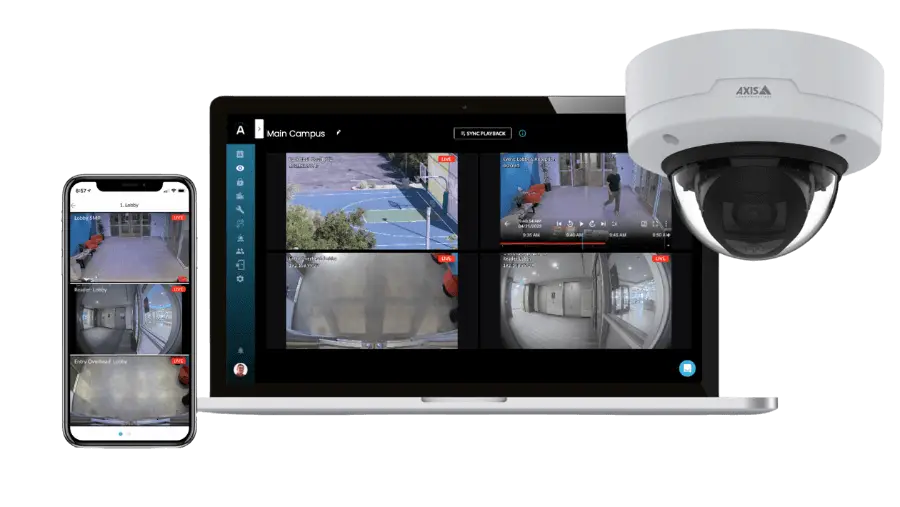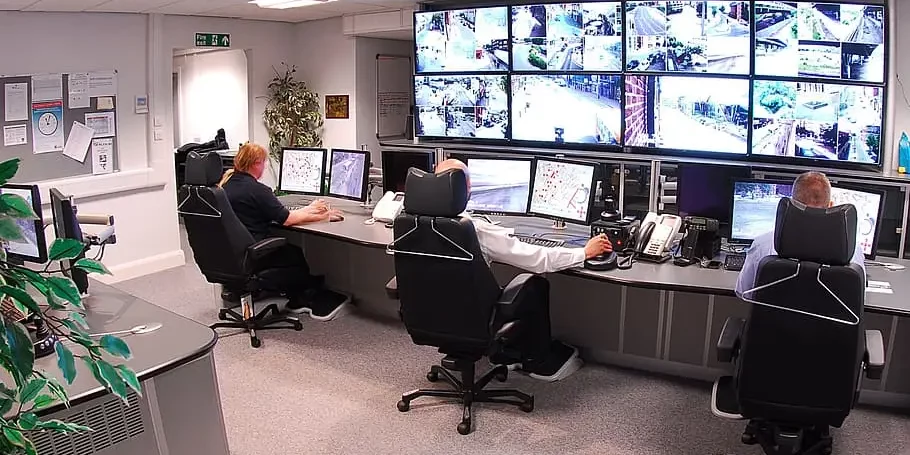Businesses, institutions, and homeowners rely on advanced video surveillance systems to safeguard their assets, enhance operations, and make informed decisions. At the heart of these sophisticated systems lies the Video Management System (VMS), a software solution designed to manage, record, and monitor video feeds from surveillance cameras.
Understanding the vital role of VMS in modern security is crucial. This article aims to delve into the concept of a VMS, exploring its key functionalities and essential features that contribute to a robust security infrastructure.
What is a Video Management System (VMS)?
A Video Management System, or VMS, is the backbone of any effective video surveillance solution. It is a specialized software designed to manage, record, and monitor video feeds from security cameras.
The significance of VMS cannot be overstated. It plays a pivotal role in enhancing security, streamlining operations, and improving decision-making processes for businesses and individuals alike.
Key Functionalities of a VMS
Video Recording and Playback
VMS systems capture and store video footage, providing a comprehensive record for later review. This functionality is vital for investigations, compliance, and overall system maintenance.
Live Video Monitoring
Real-time video monitoring capabilities allow for immediate threat assessment and response. VMS enables security personnel to actively monitor situations and take timely actions when needed.
Video Analytics
Harnessing the power of Artificial Intelligence (AI), VMS systems offer video analytics that extract meaningful insights from video data. This includes the ability to analyze patterns, detect anomalies, and identify specific objects or individuals.
Motion Detection
VMS systems employ motion detection technology, alerting operators to unusual movement within camera views. This proactive feature enhances security by prompting quick responses to potential threats.
Object Recognition
Advanced VMS platforms can identify and categorize objects or individuals in video streams. This capability is particularly valuable for tracking specific elements within a surveillance environment.

VMS Integration with Other Systems
VMS seamlessly integrates with access control, alarms, and other security systems. This interoperability ensures a cohesive security infrastructure, allowing different components to work together harmoniously.
Access Control
VMS controls access permissions to video feeds, ensuring that only authorized personnel can view specific footage.
Alarm Systems
VMS triggers alerts and alarms based on predefined conditions, providing a proactive response to potential security breaches.
Essential Features to Look for in a VMS
Growing Your System with Ease
Scalability is a key consideration for any video surveillance system. A VMS should offer the flexibility to grow and expand as your security needs evolve.
User Management and Access Control
Secure user access and permissions are critical to prevent unauthorized individuals from accessing sensitive video feeds. A robust user management system ensures accountability and control.
On-Premises vs. Cloud Storage
The choice between on-premises and cloud storage depends on specific needs and preferences. Both options have their advantages and disadvantages, and a good VMS should provide flexibility in this regard. You could also rely on DVR or NVR Systems, which have other notable differences.
Compatibility with Various Camera Types
A VMS should support different camera brands and types, including IP cameras, analog cameras, and network cameras. This compatibility ensures that users can choose the cameras that best fit their requirements.
Customization and Flexibility
Tailoring a VMS to specific security needs is crucial. A customizable and flexible VMS allows users to adapt the system to their unique requirements, optimizing its effectiveness.

Benefits of Cloud-Based VMS
Accessibility
Cloud-based VMS solutions offer easy remote access to video feeds from anywhere with an internet connection. This accessibility is invaluable for businesses with multiple locations or for users on the go.
Flexibility
Cloud-based VMS adapts to changing requirements seamlessly. Users can easily scale up or down based on their needs without the constraints of physical infrastructure.
Scalability
The scalability of cloud-based VMS allows users to expand or contract their system as needed. This flexibility is especially advantageous for businesses experiencing growth or fluctuations in surveillance requirements.
Lower Cost
Cloud-based VMS often translates to cost savings, as it eliminates the need for extensive hardware infrastructure and maintenance. This can be particularly attractive for businesses looking to optimize their budget without compromising on security.
Enhanced Security
Reputable cloud providers implement robust security measures and certifications. Cloud-based VMS users benefit from the expertise of these providers in safeguarding data and ensuring system integrity.
Integral Component of Modern Security
In conclusion, Video Management Software is an integral component of modern security systems, offering a comprehensive solution for managing, recording, and monitoring video feeds. The key functionalities and advanced features discussed above highlight the importance of selecting the right VMS for your security needs.
For businesses seeking a reliable and advanced VMS solution, Arcules stands out as a comprehensive and scalable option. With features like seamless integration, advanced analytics, and cloud-based flexibility, Arcules’ VMS is designed to meet the evolving demands of modern security.
To learn more about how a hybrid cloud video surveillance system can enhance the security of your business, visit the Arcules Cloud Surveillance Solutions page and schedule your FREE consultation.

